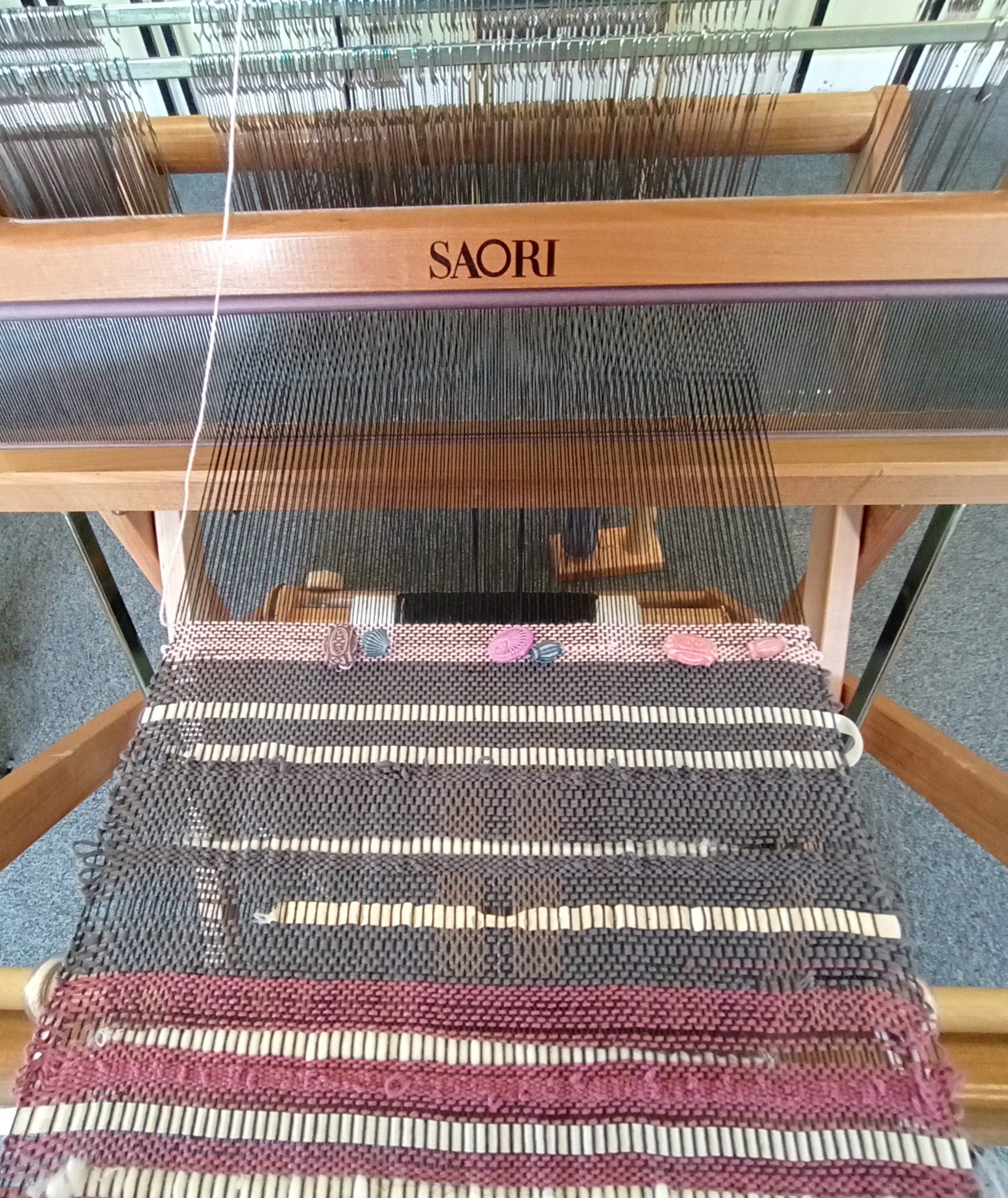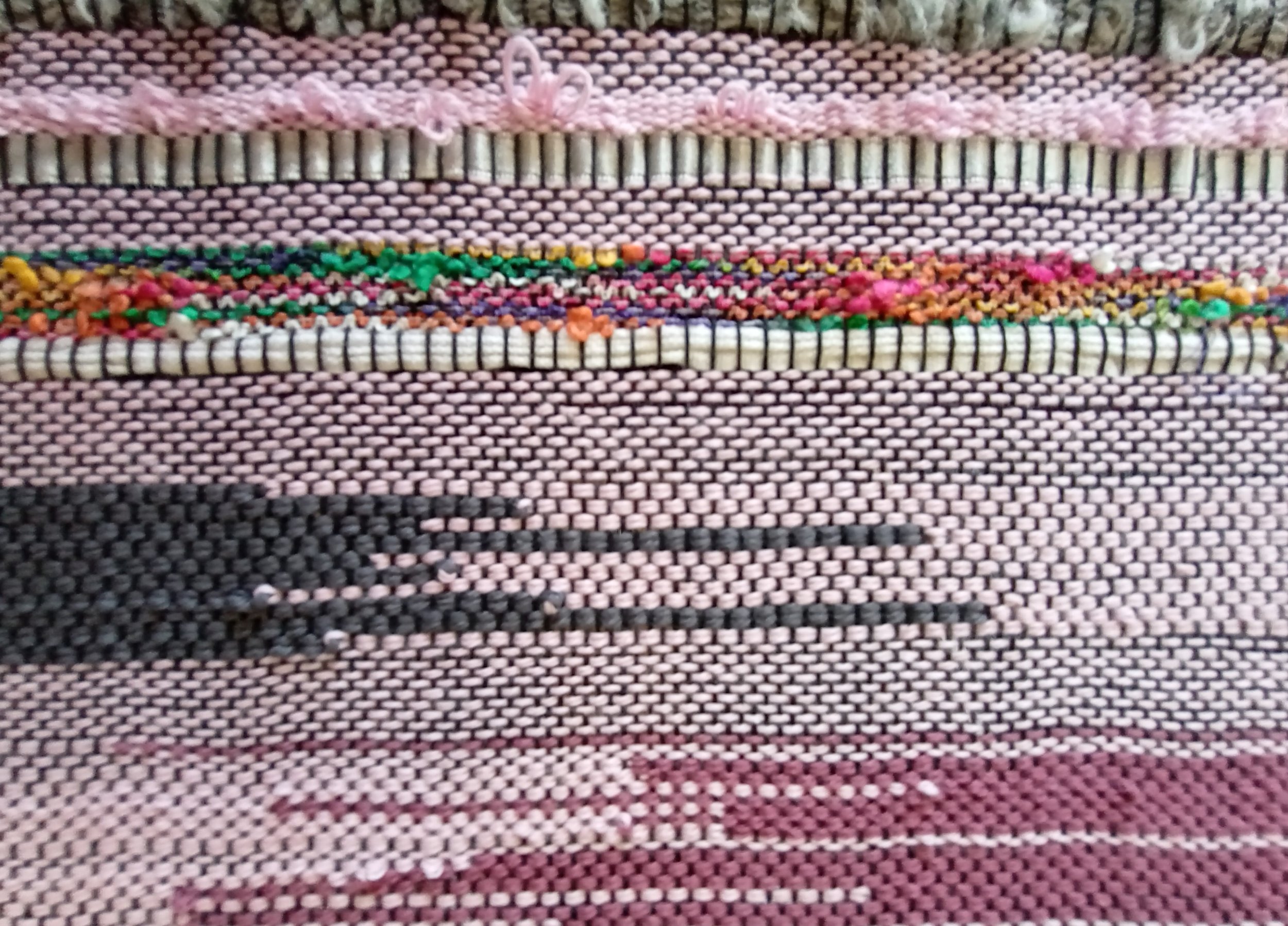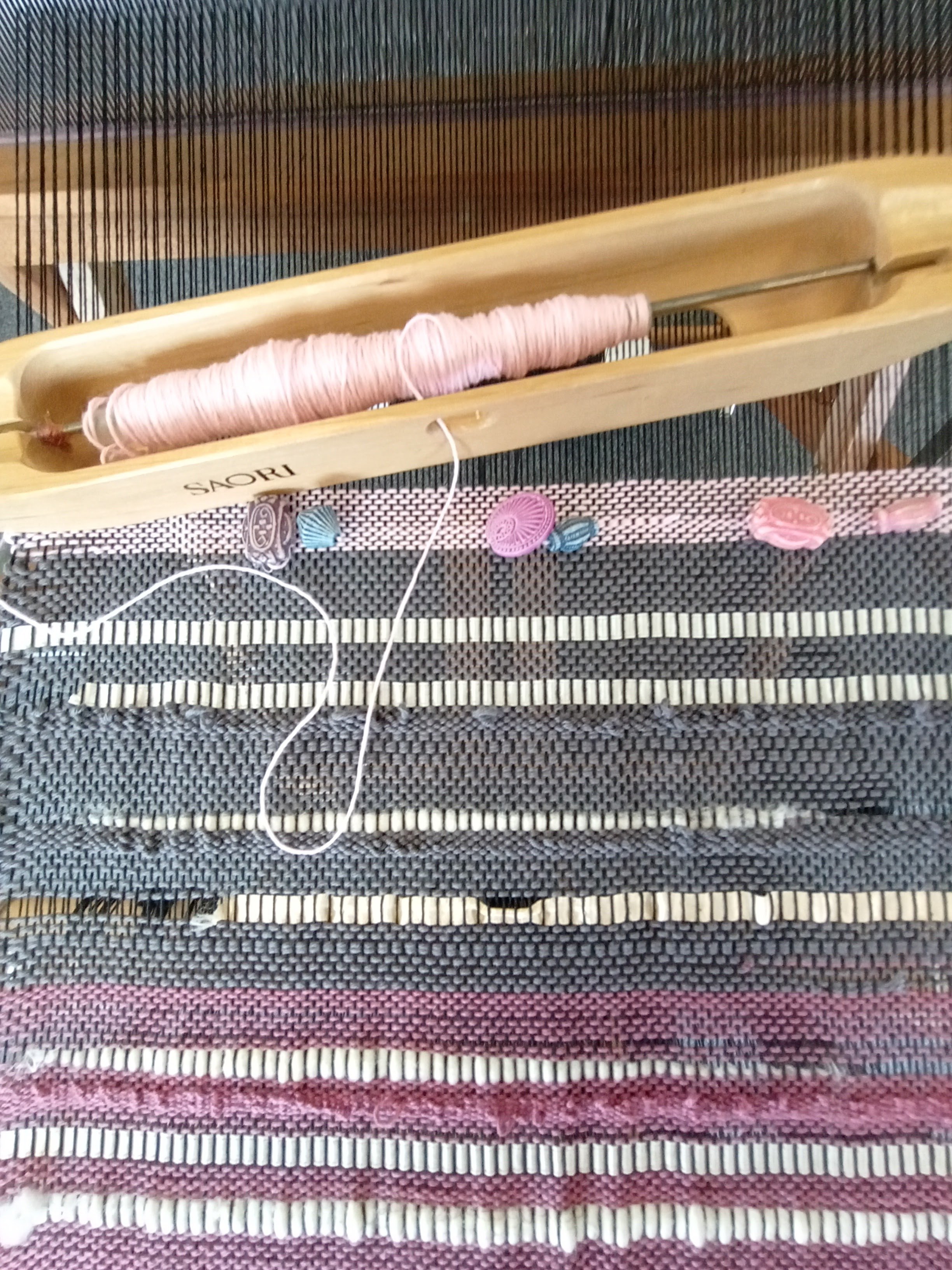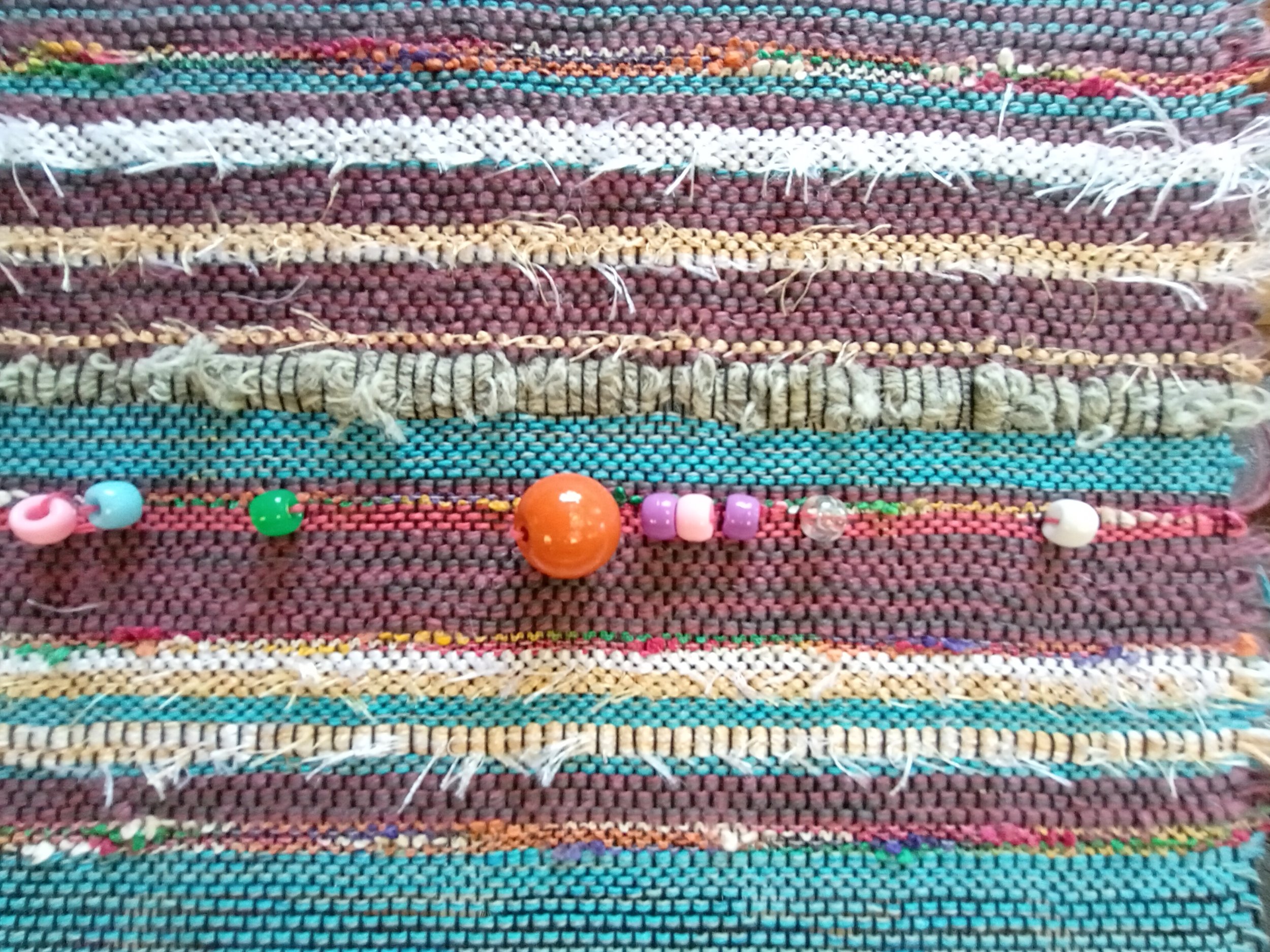Saori workshop with Beautiful Cloth Saori Studio - 11th March
I attended my first Saori Weaving workshop with Amanda Edney from Beautiful Cloth Saori Studio on Saturday. There were only 4 of us in the class so it was almost like having individual tuition. It was the first time any of us had tried Saori so we were all beginners.
The day was about having a go at using the looms, learning and trying out techniques and having a piece of weaving to take away at the end of the day. Amanda shared more about the background to Saori and her own journey to finding Saori and training at the headquarters in Japan. She talked about the process of becoming an authorised studio and how this relates to relationship building in Japanese culture. Amanda also shared with us her collection of Saori pattern books for making garments out of Saori woven cloth. This is something I hadn’t thought about before but it might be an area I choose to explore later.
What I noticed about Saori is although there may be ‘no rules’, there are definitely guidelines for the process and right ways to do things. Some of these being slightly different from the ways I have always done them as a weaver, so in a way I was having to unlearn ‘bad habits’. This includes weaving the start and end of warp yarns into the middle of the cloth so they make a tidy edge and winding yarn onto a bobbin in a cross formation; I never knew that was the best way to do it.
The Saori looms are different from any loom I’ve used before so there are things to learn about the way they work. They are something of a revelation because they are designed around the weaver to be easy to use. Notable differences are a built-in bobbin winder and a clip system to attach the warp to the front of the loom, meaning no time consuming knots and tying on and it’s really quick to cut off your weaving and set up to start again. Plus the warp tension is released with a lever you can press with your foot. The thing it will take me a while to get used to is lifting the warp threads (to make the shed) with two pedals whilst sitting down, my own loom has one big pedal and you have to stand to weave. Trying to get into my head the rhythm of hands, feet, beat; which means pass the shuttle, change feet, beat down with the beater (reed), repeat. I did occasionally get in a muddle with that.
The techniques I learnt were;
Spacing the weft - using the beater to space the weft threads closer or further apart for a more or less dense cloth.
Mount Fuji -making a point in the current weft thread pass (in the shape of mount Fuji) this creates wiggles and texture when beaten down into the cloth.
Treasures - including other items in the weft for example ribbons
Beads- threading beads onto a yarn then adding to the weft
Two yarns - one on the shuttle and one cone on the floor that you catch to create interlocking colours either side of the cloth.
Multiple yarns wound together on a bobbin - creates various textures and colours depending which yarns you choose.
Thoughts…
It’s good to start something new with ‘beginner's mind’ - releasing preconceptions about what you already know, and about your own abilities to be open to learning new things from someone with skills and knowledge that are new to you.
Learning new skills is challenging, see above reference to preconceptions and expectations. Can I be open to trying this and seeing what happens without worrying about the end result and getting everything ‘right’?
How much intuition or freedom of expression was involved?
I chose yarns and ‘treasures’ as I went along without a plan - is this intuitive? It is making creative decisions in the moment but to what extent does that represent self-expression or intuition?
Saori has an ethos of free weaving and going with the flow but it has a lot of techniques to learn too. I wonder if there is something of a cultural difference worth noticing here? Miaso Jo, the founder of Saori, came from a background of Ikebana, a Japanese tradition of flower arranging, which has strict and precise rules. In contrast to that, the techniques of Saori are very informal allowing for freedom in the item produced.
I started to think about ideas of intuition as pattern recognition but also about the creative process and intuition requiring limitations and structure too. How much limitation and structure does the creative process need?
Does the flow and intuition come after the basic techniques are mastered? Is it necessary to be proficient in a skill in order to be able to access that flow state and create with a degree of freedom and expression? There are of course limitations inherent in any artform, especially in weaving. Is it a case of you need to master the basics to push the boundaries?
Thinking ahead
Amanda asked me to think about what I’d like to weave in the next workshop with her and to put together any materials and yarns I’d like to use. I started doing this today going through boxes of ribbons and yarns and fabrics, finding tins of buttons, hunting for beads I remember having but can’t find. Do I want to make choices about the colours I want to use in advance? Do I want to make links with my other ideas and work? Do I need a theme? How open to experimentation do I want to be? Do I want to have a final use in mind for the finished woven piece? Will that affect what I put in it? How much planning do I want to do? How open do I need to leave the possibilities of what I might create?
Going through these questions and thoughts in my mind brought up the idea of creative play. I decided that it is important for me to allow myself some more experimentation and creative play and to keep the final outcome fairly open ended at this point. To narrow down my ideas too much at this stage is not allowing for unexpected creative twists and expansion of ideas. More refined final pieces can come further along in the process.
If you would like to keep up to date with my progress throughout this project, please follow me on my blog and Social Media; Instagram @ameswibs, Twitter @amiwib.
Intuitive Threads is a personal research and development project by textile artist Amie Wiberley, Supported using public funding by Arts Council England.
Amie is a textile artist and holistic and creativity coach. Find out more at www.amiewiberley.co.uk. Sign up to the mailing list here.



